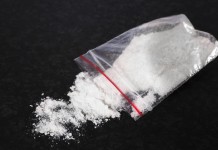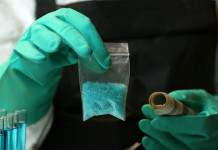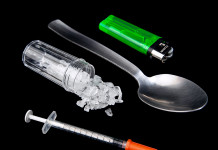One-half of lethal poisonings in the US are caused by excessive carbon monoxide levels in the home. The origins include blocked chimney openings, broken water heater vent pipes, and cooking appliances used for household heat. Safety and prevention tips are provided.
Several hundred people will die this coming year, killed in their homes by an invisible, silent assassin. Thousands more will have their health damaged, perhaps seriously. The cause of all of this human carnage is carbon monoxide, an invisible, odorless gas.
Now I don’t mean to scare you, but this is truly scary stuff. When I first began researching this topic, it was just another story assignment. No big deal. But the more I learned, the more I found myself worrying about whether my home’s furnace or water heater - two totally forgettable appliances that we tend to think of only as comfort providers - could instead kill me and my family. I’ve now taken steps to ensure that it won’t happen, and you need to do the same.
Am I being overly cautious? I don’t think so. Carbon monoxide is not a minor problem. It accounts for half the fatal poisonings in the United States each year, which, depending on the set of statistics you choose to use, means a minimum of 200 to as many as 1,500 deaths per year. A 1986 Canadian study of 1,000 homes found that three-quarters had some carbon monoxide buildup, 10 percent of them at health-threatening levels. Yet dangerous as it is, few homeowners know about carbon monoxide or how easy it is to guard their homes against its deadly intrusion.
This article will offer you cures so carbon monoxide doesn’t become a problem in your home.
WHY IT KILLS
This gas is deadly because of its extreme attraction to hemoglobin, the main component of red blood cells. Its affinity for hemoglobin is 245 times greater than oxygen’s. Carbon monoxide is absorbed by the body only by breathing, the same way we get oxygen. Hemoglobin combines with oxygen in our lungs, carrying the oxygen throughout our bodies, releasing it to the tissues as needed. But when carbon monoxide is present, it replaces the oxygen. In high enough concentrations, it can kill in minutes.
One of the reasons carbon monoxide poisoning claims so many victims is that its physical symptoms are frequently misdiagnosed by doctors as the flu or whatever bug is going around. It’s no coincidence that most carbon monoxide poisonings occur during the winter, the prime time for colds and flu.
CARBON MONOXIDE SOURCES
Carbon monoxide (the chemical symbol is CO) is a by-product of incomplete combustion. Colorless and odorless, it gives no warning of its presence. It’s impossible to avoid some exposure to carbon monoxide. Your body even produces minute quantities. Carbon monoxide sources are everywhere. They include such obvious ones as automobile exhaust fumes, furnaces, the kitchen stove, the water heater, your fireplace, charcoal grills, even your lawn mower. And such unexpected sources as the vapors of some solvents, such as methylene chloride in some paint strippers. You can’t avoid breathing some carbon monoxide, but as long as the level in the blood is below 2 percent, there’s no cause for concern.
OUR HOMES AND OUR HEALTH
As if our homes didn’t already have enough sources of carbon monoxide, we tend to make the situation worse in pursuit of energy efficiency. Some houses are simply too tight for safety. Besides being tighter thanks to more insulation, caulking, insulating window films and weather-stripping, as thermostats have been turned down, a variety of room heaters have taken their place, or a fireplace or wood stove installed.
Or maybe you’ve built an enclosure around the furnace or water heater in the process of remodeling the basement. If you didn’t provide for adequate fresh air flow, perhaps from outside, you may have created a perfect opportunity for carbon monoxide to build up.
CLUES AROUND THE HOME
Even though carbon monoxide can’t be detected by your senses, sometimes, but not always, there will be other clues to its presence:
- Persistently stuffy, stale or smelly air that never clears
- Very high humidity, often showing up as moisture on the windows
- Soot around the outside of the fireplace, furnace or chimney
- No draft in the chimney
- A hot draft from the chimney into the home
- The smell of exhaust fumes
HEALTH-RELATED CLUES
Because carbon monoxide poisoning is more of a problem during the winter when heating systems are running and everyone seems to have a cold or the flu, the physical symptoms are often misdiagnosed. Some of those symptoms are:
- Persistent severe headaches
- Dizziness, blurred vision
- Nausea and vomiting
- Confusion, disorientation, loss of muscle control
- Sleepiness, but never feeling rested
- Rapid heartbeat, pulse or a tightening of the chest
- An abnormal cherry color to the skin
- Chest pain (angina) when exercising
- Fainting, unconsciousness
- Feeling sick and tired at home, but fine once you leave the house.
A lot of these symptoms sound just like the last time you had the flu, don’t they? That’s what makes this such a sneaky, hard-to-identify problem. If everyone in the family seems to be experiencing the same illness to some degree (body size and health are both factors that determine when symptoms will arise) and nothing seems to help, ask your doctor to check for carbon monoxide poisoning, immediately.
Ask for a carboxyhemoglobulin level blood test. It’s the only test that will identify carbon monoxide poisoning. Other routine blood and drug tests won’t do the job.
High levels of carbon monoxide don’t affect everyone equally. Pregnant women, people with heart problems and children are all more susceptible. Carbon monoxide also has a stronger effect at higher altitudes because the air has less oxygen in it to begin with, allowing the carbon monoxide to bind even more effectively with the hemoglobin.
The treatment for carbon monoxide poisoning is usually just fresh air and time. In severe cases, however, the patient will be placed in a chamber with oxygen under high pressure. While carbon monoxide doesn’t accumulate in your system, long-term exposure causes permanent damage to the nervous system.
WHAT NOT TO DO
To keep carbon monoxide from becoming a problem, keep these commonsense rules in mind:
- Don’t sit in a parked car with the engine running and the windows closed, or let the engine idle for long periods of time in a closed garage.
- Never use a charcoal grill indoors.
- Never use a kitchen stove or oven for heating purposes.
- Never use an unvented gas heater indoors.
- Avoid extensive use of kerosene heaters - better yet, don’t use them at all.
- Don’t put furnaces and water heaters in an enclosure unless you provide adequate ventilation, perhaps ducted in from outside. Your local utility can give you guidelines on what to do.
- Don’t use LP gas lamps, heaters or gasoline lanterns indoors or in an RV, unless they’re vented to the outside.
WHAT YOU SHOULD DO
Besides knowing what not to do (above) there’s a number of steps you can take to ensure you won’t have a problem:
* Check your chimney every fall (or have it done for you) for signs of blockage, such as bird’s nests.
* Have your chimney cleaned annually, before the start of the heating season and especially if you frequently use a fireplace or wood-burning stove.
* Have all heating appliances checked for proper function by a professional, preferably on an annual basis. The check should include a visual inspection of the furnace’s heat exchanger, all vents, fan motor and belts, and fuel shutoff switch. Your local utility company usually offers this inspection at low cost. To avoid a lengthy wait, schedule the inspection before the heating season begins.
* Make sure the water heater is properly vented with no leakage.
* If you’ve recently remodeled your home, especially with improvements that make it more energy efficient, have the carbon monoxide level checked by the utility company to ensure that you still have adequate ventilation.
* If your furnace is enclosed, make sure it has access to enough outside combustion air. Again, your utility company can provide specific advice.
* Have your family vehicles’ mufflers and tailpipes checked, replacing them if they’re worn out or loose fitting.
* On any appliance, learn to recognize a properly adjusted burner flame. The flame should burn crisp and blue. If it’s orange, it needs adjustment - get professional assistance.
* The older the furnace, the more likely you’ll have problems. If you need a new furnace, or are purchasing one for a new home, choose a “sealed-combustion” model. (Note: Don’t confuse this type with versions classified as “induced-draft” or “direct-vent.” They’re not the same.) All of the major manufacturers offer them. These units draw air directly into the combustion chamber from the outside, and vent the exhaust gases straight back out.
* Sometimes you can retrofit your present heating system with either a power venter (gas furnaces) for about $200 to $400, or a delayed-action solenoid valve for about $100 on oil-fired furnaces. Power venters move exhaust gases directly outside through a side wall. The delayed-action solenoid stops the flow of oil until the blower goes on.
* If your home is very airtight (most homes aren’t), you may want to install an air-to-air heat exchanger, also called a heat-recovery ventilator. It ensures that your home won’t become depressurized, which leads to backdrafting.
* If you install or have a new water heater installed for you, make sure the job was done right by doing a backdraft check afterward.
* Install one of the electronic or chemical carbon monoxide detectors as cheap insurance.
* Periodically, conduct a backdrafting check.
DETECTORS, THE BEST DEFENSE
Even if you take all of the precautions outlined so far, there’s nothing that guarantees the furnace’s heat exchanger won’t develop a leak two minutes after the inspection. In the past that was a risk you had to run, but not anymore.
Just as smoke detectors are now common in homes and apartments, carbon monoxide detectors, sometimes paired with a smoke detector, are now available. The accompanying photos and Buyers Guide provide help in choosing a detector that meets your needs and budget.
Least expensive but requiring a regular monitoring are the small chemical detectors. These use carbon monoxide-sensitive chemicals that change color when exposed to a certain level of the gas. Typically costing under $10, they must be replaced at least every year. Most important, you need to develop the habit of checking them regularly, looking for that telltale color change.
Electronic detectors are more expensive, but you don’t have to monitor them. Just like the smoke detectors that they resemble, their alarms will sound if a certain level of carbon monoxide is present.



































